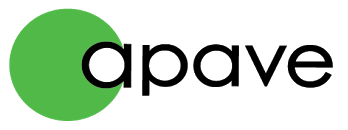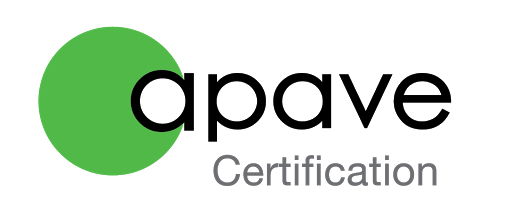Prerequisites and general procedures for examinations
Prerequisites and general procedures for the conduct of thermodynamic system examinations.
1. INTRODUCTION
The purpose of this document is to inform candidates for the certification of inspectors of thermodynamic systems and ventilation systems combined with heating systems with a rated power greater than 70 kW as to the prerequisites for the theoretical and practical exams set up by Apave Certification for each level of certification "simple system" and "simple system and complex system".
2. PREREQUISITES
Simple system: thermodynamic systems and ventilation systems combined with heating, with an effective rated power of more than 70kW, used to meet the comfort requirements of the occupants.
Complex system: thermodynamic systems, with an effective rated power greater than 70 kW, other than simple systems.
3.GENERAL PROCEDURES
Regardless of the level of certification requested, the candidate must satisfy the following prerequisites:
Diploma and one year of professional experience in the field of techniques for producing cold. The diploma recognised training at the post-secondary level of education for a minimum of 2 years or a duration equivalent to part time, given by a university or higher institution of learning or another establishment of an equivalent level, with this diploma being issued by a competent authority of a State in the European Community (a professional title or certification for an equivalent level of qualification are accepted).
or
3 years of professional experience as a technician in the production of cold or an equivalent level in the techniques of producing cold.
or
Professional qualifications required by one of the aforementioned States for a comparable activity of periodical inspection of air conditioning systems and reversible heat pumps, with these qualifications obtained in one of these States.
Certification is issued only if the theoretical and practical examinations are both passed. The objective of the theoretical and practical examinations is to assess the skills of the candidates according to the level of certification chosen. They are designed by professionals with many years of experience in thermodynamic systems and ventilation systems combined with heating.
The examiners are qualified by Apave Certification according to the criteria indicated in appendix 1 of the application order; in particular, they have signed a confidentiality agreement and code of ethics requiring that they do not assess candidates with whom they have any ties whatsoever.
The content of these examinations is compliant with regulatory requirements.
4. THEORETICAL EXAMINATION
The theoretical examination consists of a MCQ (Multiple Choice Questionnaire) that is specific for each level of certification.
Each one has 60 questions of the "3 answer" type or "true/false" type.
For each MCQ, only one answer is correct, unless mentioned otherwise in the body of the question (up to 3).
The MCQs are comprised of randomly-drawn questions from a library of questions sorted by regulatory requirement.
The questions of the MCQ cover all of the requirements defined in appendix 2 of the application order (see the appendix of this document).
The candidate has 60 minutes to complete the MCQ and does not have access to their documentation.
To pass a MCQ, you must obtain a total score of 18/30, with 0.5 point awarded for each question that is answered correctly,
There are no negative points for incorrect answers, and there are no disqualification questions.
All of the results fall into a statistical database that counts the correct number of answers per question.
5. PRACTICAL EXAMINATION
For each level of certification, the practical examination consists of a virtual situation during which the candidate is alone, "face to face" with the examiner. This "in the field" situation is followed by a period of drafting the conclusions of the mission.
The examiner presents the candidate with a scenario (chosen randomly from among several) from detailed informative supports (description of the location, plan, photos description of the equipment, technical documents, maintenance logs, etc.) that make it possible to understand the context. The candidate conducts his inspection based on these elements.
Verbal exchanges (guided by questions put forth by the examiner) are organised so that the candidate can provide the examiner with the information that he needs to judge his technical skills. These questions are oriented according to the requirements defined in appendix 2 of the application order.
The candidate then draws up his report (result of the verifications, evaluation of the output and sizing, proposal for recommendations).
The practical examination lasts from 1 1/2 hours (simple level) to about 2 1/4 hours (simple and complex level): 35 to 80 minutes for the situational portion, 15 to 45 minutes for drafting the report and 10 minutes of debriefing.
Each "skills of individuals" requirement defined in appendix 2 of the application orders is scored according to 3 levels: "satisfactory", "to be improved", "insufficient". In addition, the examiner formulates an opinion as to the certification of the candidate (favourable or unfavourable) that he gives to Apave Certification.
According to the number of requirements assessed as "Insufficient" and the opinion of the examiner, the examination is to be taken again. The decision is taken according to the particulars defined in the certification procedure AC-PRO-019
SUMMARY OF ANNEX 2 OF THE ORDER OF 15 DECEMBER 2016: SKILLS OF INDIVIDUALS
1 - The technologies of the materials making up thermodynamic systems and ventilation systems combined with heating (systems)
2 - Functioning of thermodynamic systems and ventilation systems combined with a heating system
3 - Thermodynamic and ventilation/heating malfunctions, and methods of diagnosing them.
4 - The installation in buildings of thermodynamic systems and combined ventilation and heating systems
5 - The sizing of thermodynamic systems and ventilation systems combined with a heating system
6 - Regulation and programming of thermodynamic systems and ventilation systems combined with a heating system
7 - Knowledge of the thermal design of buildings, in particular knowledge concerning comfort in the summer
8 - Methods for assessing system efficiency described in appendix 3 of the order of 24 July 2020 relating to the periodic inspection of thermodynamic systems and ventilation systems combined with heating with a rated effective power greater than 70 kilowatts
9 - Identification of the parameters and application of the RatioClim sizing assessment method described in appendix 4 of the order of 24 July 2020 relating to the periodic inspection of thermodynamic systems and ventilation systems combined with a heating system with an effective rated power greater than 70 kilowatts.
10 - Legislative and regulatory texts relating to thermodynamic systems and combined ventilation and heating systems
11 - The actions making it possible to limit the external and internal input of heat which make it possible to limit or avoid the use of thermodynamic systems and ventilation systems combined with heating
12 - The correct use of thermodynamic systems and ventilation systems combined with heating
13 - The possibilities for improving the energy efficiency and operation of thermodynamic systems and ventilation systems combined with heating within a building
PRACTICAL aspects to be mastered
Through an individual simulation, check that the candidate :
- knows how to analyse and check the information contained in the HVAC (Heating Ventilation Air Conditioning) booklet.
- knows how to evaluate the performance of the system using the 2 evaluation methods described in appendix 3 of the order of 24 July 2020 relating to the periodic inspection of thermodynamic systems and ventilation systems combined with a heating system with an effective rated power greater than 70 kilowatts.
- knows how to evaluate the sizing of the installed thermodynamic system taking into account the need.
- is able to write the inspection report in French using a methodology adapted to the cases dealt with, to interpret the results and return them to a non-specialist.
- is able to suggest recommendations suited to the cases treated, taking account of the technical, legal, economic and environmental context.
Download the document: General terms and conditions relating to the conduct of examinations : AC-MOP-012-03

